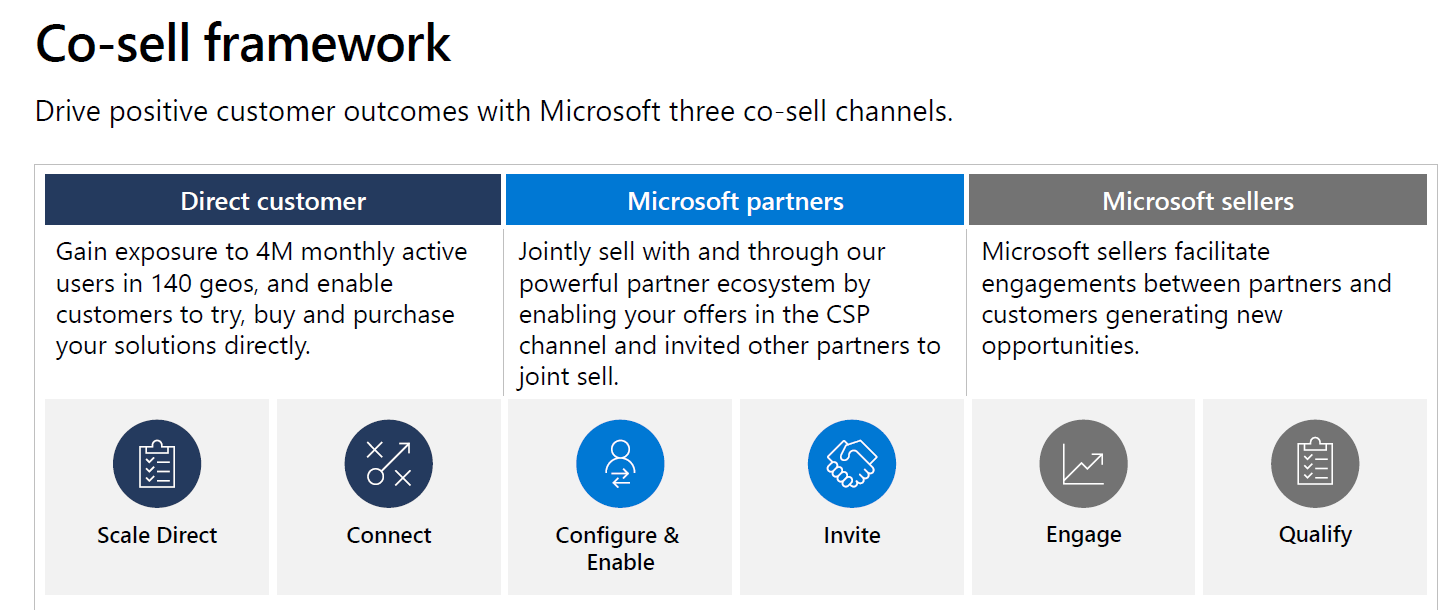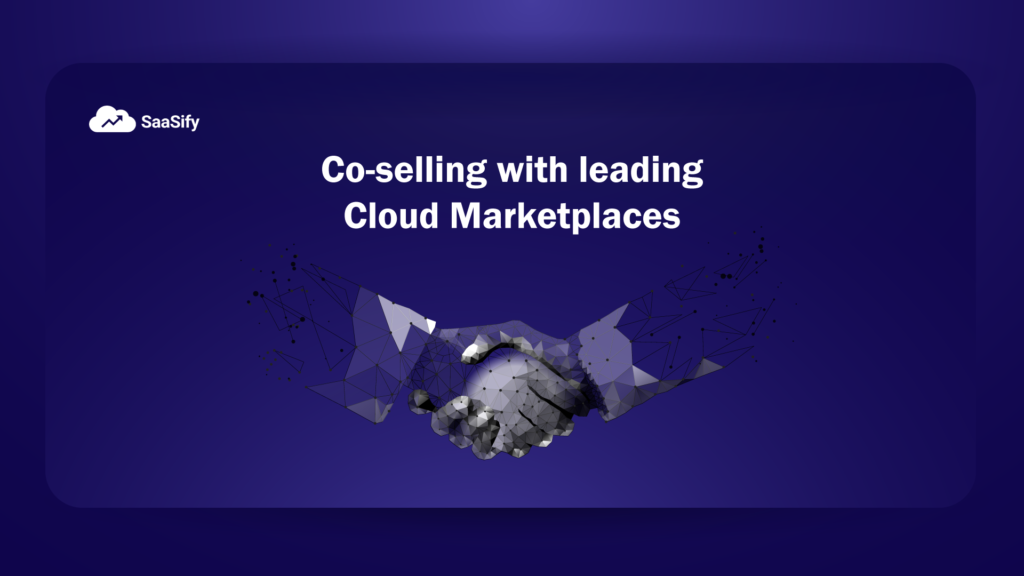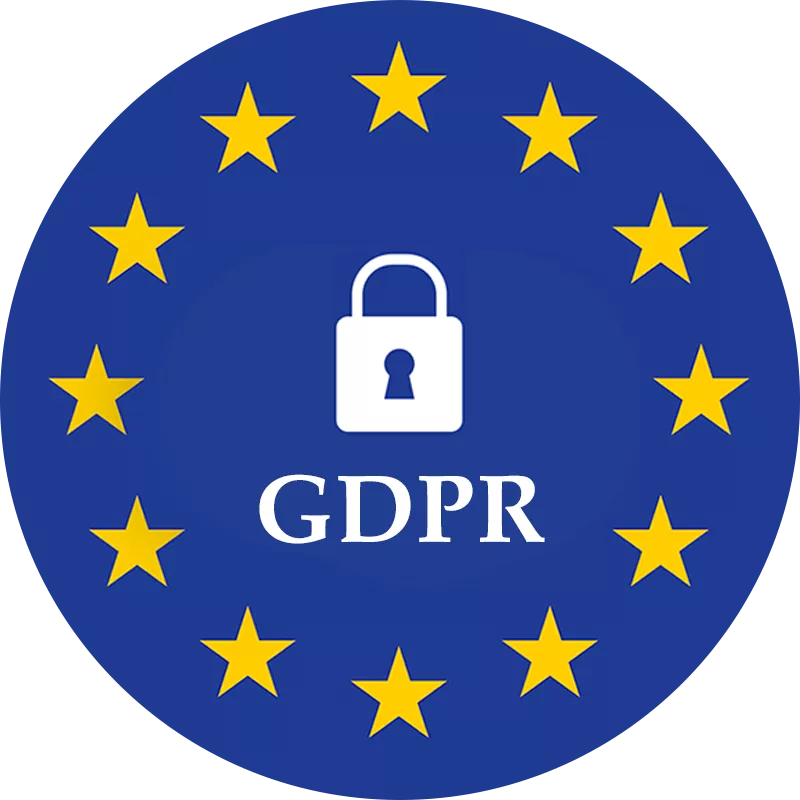B2B SaaS Marketplaces are gaining momentum as we speak. Sellers and buyers are flocking to them to leverage easy selling and software procuring. But there’s more to cloud marketplaces than meets the eye. This blog will outline how ISVs can boost their revenue by co-selling with cloud marketplaces and take, their business and leadership in advanced SaaS development to the next level.
Co-selling is an opportunity to join forces with leading cloud providers (such as Microsoft and AWS) and their giant partner ecosystem.
In simple terms, it’s a mutually beneficial collaboration that enables two sales teams of different companies to associate. This process includes shared activities like building demand, sales planning, sharing leads and accelerated partner-to-partner selling.
Sounds fascinating, but what is the need for such a collaboration and what exactly are the benefits of this alliance? Let’s dive deeper.
Why do cloud marketplaces co-sell?
B2B SaaS Marketplaces are incentivized to set co-selling in motion if your product can increase the cloud commitment of customers or even run down their committed spending.
Co-selling is also beneficial for cloud platforms as it eliminates the potential channel conflict between vendors and partners. It enriches the customer value proposition by compelling direct sellers to collaborate with the partner ecosystem on a wider set of offerings. It is also extremely useful in identifying areas of opportunity to improve technical support.
Benefits of co-selling
Cloud Marketplaces are not the future, they are the now. More and more enterprises are shifting to SaaS marketplaces to fulfill their software requirements. Co-selling can put your product at the front and center of a channel that is bustling with buyers.
- It gives more visibility to your offer.
- It gives the power of more resources, data, and contacts. Access to the cloud resources and marketplace benefits aids in obtaining and managing customer data.
- This in turn allows deals to enlarge and escalate.
- The competition in the marketplace causes deals to be closed even sooner. With the availability of options increasing, customers are able to find and choose one which suits their needs.
- Sales targets are reached rapidly.
- It provides prospective clients with increased confidence and protection. Collaboration with a partner ecosystem brings in customers who already trust the ecosystem.
A relationship-centric approach through co-selling would help your organization to fill in the product gap. Co-selling is on the rise, making it the perfect time to experiment and take advantage of the opportunity.
According to a recent report by Crossbeam, twice as many companies are using co-selling tactics (71%) than are using Partner relationship management (PRMs) (35%) in 2021. This is an increase of 9% from 62% in 2020. Source
Looking at the increasing popularity, the means of co-selling are easing up. Major cloud platforms such as AWS and Microsoft Azure are minimizing the complicated procedures and also providing additional benefits for Co-selling offers on their platform.
According to Gina Yong, Director of Global Co-sell program at Microsoft and Joselyne Rivera, Azure manager of Co-sell program at Microsoft,
“The co-sell program opens up partners to an ecosystem of 4M unique visitors each month in Azure Marketplace and is responsible for driving over $15B in partner annual contract value.”
Eligibility
Any offer published through the commercial marketplace is eligible for the co-sell program, provided it is a Transactable offer. List or Trial offers are not eligible for the program. Although each cloud service platform has varying requirements, the most common requirements are:
- Listing a Transact offer on the cloud platform.
- A complete business profile.
- Partner sales contact information and required bill of materials.
Key Co-sell Frameworks

Source: Microsoft
To co-sell with Microsoft, there are three channels. Each channel has different levers and tactics your organization can utilize to drive positive customer outcomes.
- Direct customer: The direct channel unlocks the sales and marketing benefits of Marketplace Rewards to accelerate your business. Customers can find, try, and buy your solutions via AppSource, Azure Marketplace or the Azure portal. It allows you to reach 4M monthly active users in AppSource and Azure Marketplace in more than 140 global geographies.
- Microsoft partners: This channel allows you to jointly sell and also invite partners for joint selling with a powerful partner ecosystem. This ecosystem provides opportunities for partners across markets, industries, and continents to deepen their relationships with their customers, Microsoft, and each other.
- Microsoft sellers: It is a seller-engagement focused channel where thousands of sellers actively engage with customers of all sizes. Sellers facilitate partners to partake in generating new opportunities to connect with customers.
Co-selling has been extremely successful and instrumental to a lot of companies. SaaS offers are raging up the cloud platforms by taking advantage of such opportunities.
Brian Levenson, founder of Strong Skills has been using Microsoft Azure to utilize the opportunity. See how wonderfully it worked for him:
“Microsoft Sellers are compensated for driving Microsoft product sales and satisfaction of their customers. Those are the things that you want to really make sure they understand about your product: How does it solve the customer’s business problem? Do you have happy reference customers and case studies? How do you drive adoption and consumption of Microsoft products?” – Brian Levenson Source
Looking to start selling on Cloud Marketplaces? SaaSify will help you go live in a week (which typically takes months!)
This blog was originally published on SaaSify.




















